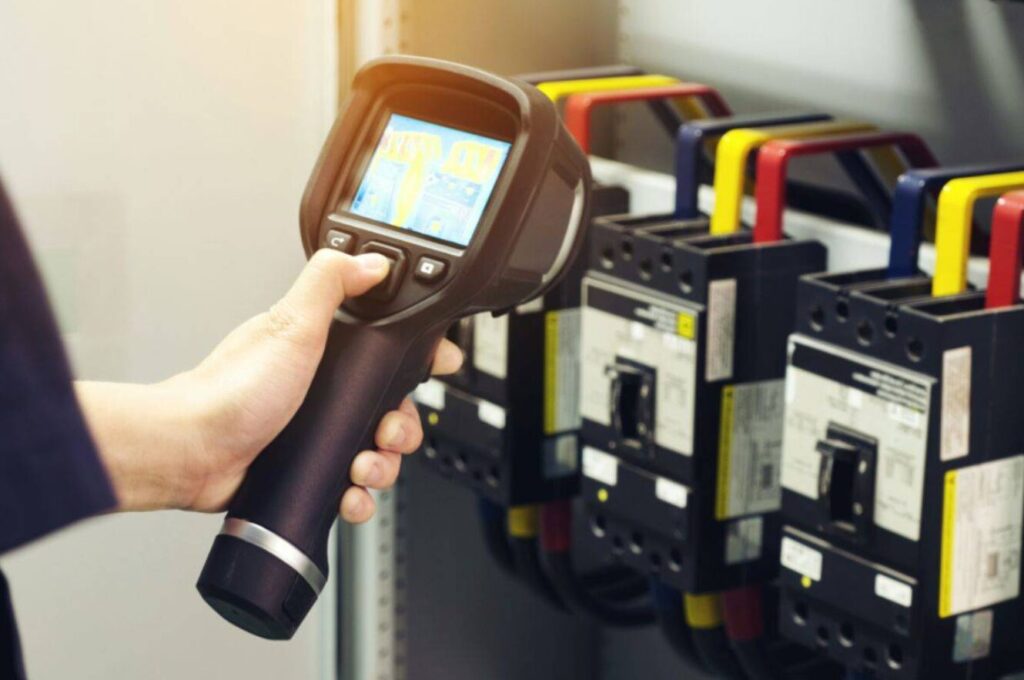Discovering Hidden Drafts with Thermal Technology
The quest for a more energy-efficient home often feels like guesswork, but what if you could see exactly where your expensive heat is escaping? This is now possible thanks to the growing accessibility of thermal imaging camera rental services. These devices function like X-ray vision for your property, visually mapping temperature differences to reveal cold spots caused by drafts, missing insulation, and other hidden flaws. For homeowners looking to slash their bills and reduce their carbon footprint, renting a thermal camera provides an affordable and revealing first step toward understanding their home’s performance.
The principle is straightforward: thermal cameras detect infrared light, which is invisible to the human eye but is perceived as heat. The device translates this information into a vivid colour-coded image on a screen, typically showing warmer areas in reds and yellows and cooler zones in blues and purples. A cold patch on an interior wall on a chilly day, for instance, often indicates that heat is leaking out from that exact location. This immediate visual feedback makes complex building physics understandable to anyone, turning abstract concepts of heat loss into a clear, colourful map.
The Rise of Thermal Imaging Camera Rental Programs
From Professional Tool to Public Access
Not long ago, thermal imaging technology was a costly tool reserved for professional energy auditors and construction experts. However, driven by increased demand from environmentally conscious homeowners, a new model has emerged: thermal imaging camera rental. Local councils, energy suppliers, and community organisations across the UK are now establishing programs that allow residents to borrow these devices for free or a low fee. This initiative empowers individuals to conduct their own preliminary investigations, democratising access to technology that was once out of reach for the average person.
The popularity of these schemes is undeniable. For example, Wiltshire Council reported a “huge uptake” after making units available at local libraries, quickly developing a waiting list. Similarly, Octopus Energy loans out hundreds of cameras to its customers each winter, facilitating thousands of home surveys annually. This surge in interest highlights a growing public desire to take a hands-on approach to home energy efficiency. A thermal imaging camera rental program effectively places a powerful diagnostic tool directly into the hands of curious homeowners, fostering greater engagement with energy conservation.
What Your Thermal Images Reveal—And What They Don’t
Interpreting the Colourful Clues Correctly
When you first use a rented thermal camera, the results can be startlingly clear. Common issues immediately visible include significant heat loss around poorly sealed loft hatches, draughty windows and doors, and sections of external walls with inadequate or missing insulation. Jamie Matthews, a web engineer who used one, confirmed it was “good fun” and showed up problems that were not immediately obvious, allowing him to draft-proof specific areas himself. This ability to pinpoint exact locations of energy leaks is the primary strength of a thermal imaging camera rental.
However, experts universally caution that these images can be easily misinterpreted by untrained eyes. A wall warmed by the afternoon sun might appear to be radiating heat long after the sun has set, falsely suggesting a leak. Similarly, reflective surfaces like glass or metal can trick the sensor into showing a cold, drafty area where none exists. Even the corners of rooms often show up as cold, but this is usually an artifact of air circulation, not a structural insulation fault. Therefore, while a thermal imaging camera rental is excellent for identification, its findings require careful and knowledgeable analysis.
Why Professional Advice is Your Essential Next Step
Beyond the DIY Survey for Major Renovations
A thermal imaging camera rental is an ideal tool for discovery and minor DIY fixes, like applying weather stripping to a draughty door. For any major renovation, however, the imagery should be a conversation starter with a expert, not the final word. Building physics researchers strongly advise a professional energy audit for anyone planning significant interventions like installing a heat pump, adding wall insulation, or replacing windows. A certified expert can differentiate between a misleading image and a genuine structural problem, ensuring your investment truly enhances your home’s efficiency.
The risks of skipping expert guidance are substantial. Dr. Ronita Bardhan of the University of Cambridge warns of “retrofit anxiety,” where homeowners become overly worried by what they see and may rush into unnecessary modifications. More critically, improperly installed insulation based on a DIY diagnosis can trap moisture and lead to severe damp and mould issues, creating a new problem far worse than the one you tried to solve. A professional surveyor will use a thermal camera as part of a holistic assessment, combining its data with air pressure tests and knowledge of building regulations to provide a safe and effective plan.
Maximizing Your Thermal Imaging Camera Rental Experience
Tips for an Effective and Informative Home Survey
To get the most value from your thermal imaging camera rental, a little preparation is key. First, consult the training materials provided by the rental service. Companies like Flir offer free online guides, and many councils, such as North Somerset, publish introductory videos. The goal is to understand basic operation and common pitfalls. Plan your survey for a day with a significant temperature difference between the inside and outside of your home (a cold, cloudy day is ideal), and ensure you scan both interior and exterior walls for a complete picture.
During the survey, move the camera slowly and hold it steady to get a clear image. Pay close attention to the junctions where different materials meet—around windows, where walls meet roofs, and along skirting boards. Remember that the camera shows surface temperatures, not the root cause, so use it to identify where to look closer. Finally, treat your findings as a highly informative map of potential issues. Share the images with a qualified professional who can help you prioritize repairs and plan a holistic approach to making your home warmer, cheaper to run, and more sustainable.


